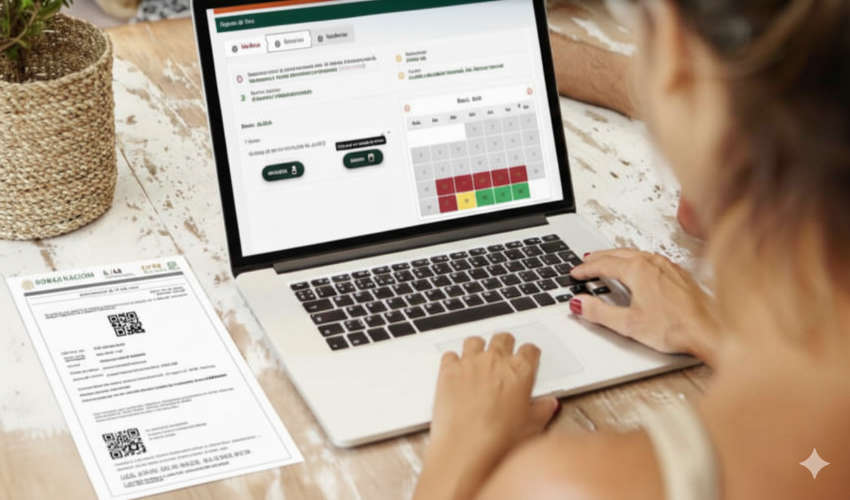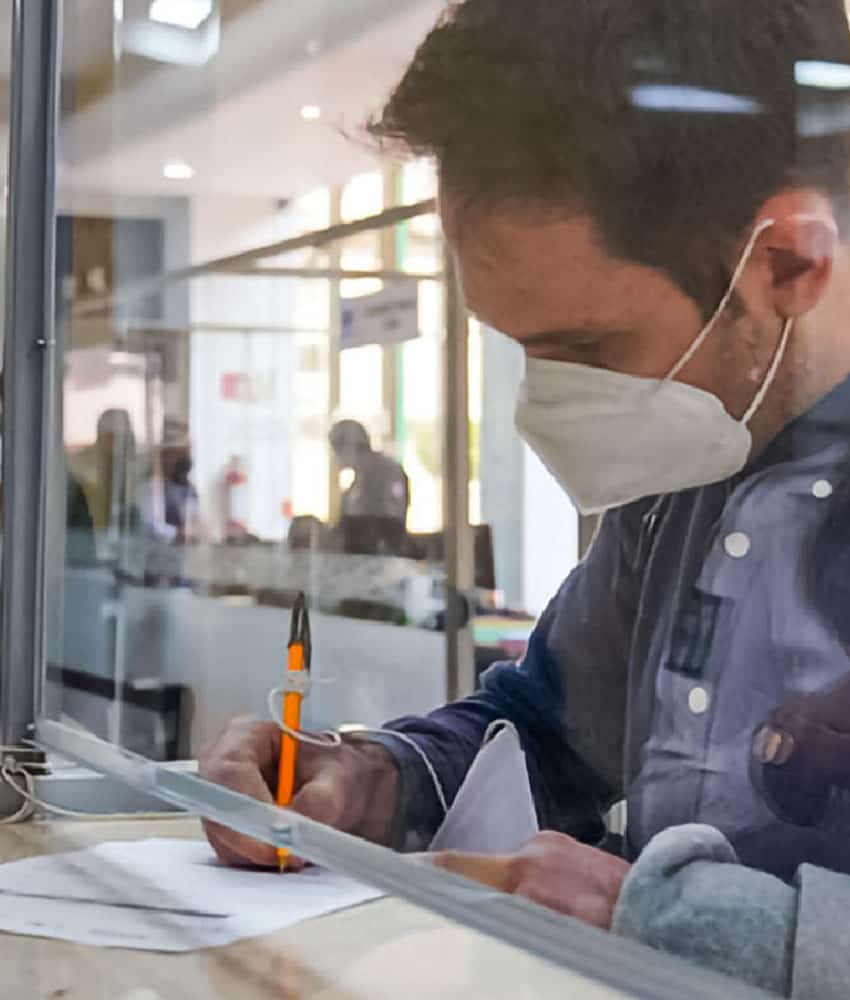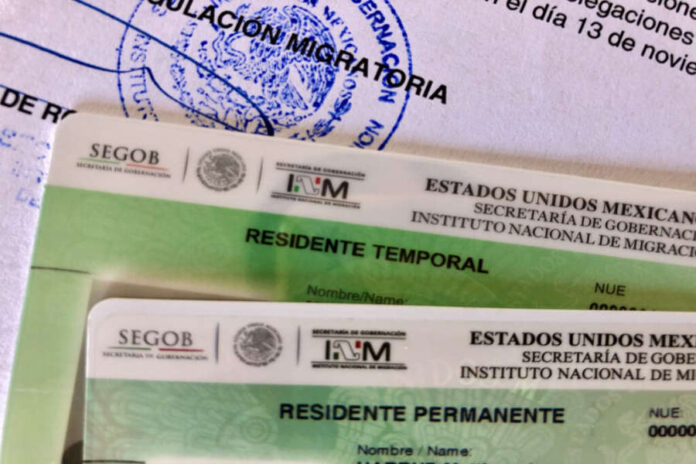I’m writing this flying high — literally — on a plane out of Puerto Vallarta, feeling a wave of relief wash over me. My three-year Mexican residency card has just been approved, which means I won’t have to wrestle with immigration red tape again until 2028. Anyone who has gone through Mexico’s residency process knows how much of a victory this is.
Renewing from a one-year temporary residency to a three-year card is the next natural step for anyone on an immigration journey. Compared to getting your original residency card approved, the process this time around is blissfully straightforward. While many people choose to hire a fixer to handle everything, and understandably so, it’s also absolutely possible to do it yourself. I did it solo in Puerto Vallarta, and it was smooth sailing from start to finish. Here’s how it works.

Why a fixer might be worth it (and why I didn’t use one)
Many immigrants in Mexico swear by their fixers — local professionals who specialize in navigating Mexico’s famously variable bureaucracy. It’s a common joke that each INM (Instituto Nacional de Migración) office has its own “interpretation” of the official rules. Some offices might require extra documents that others don’t.
A good fixer can anticipate those quirks, saving you time, frustration and possibly a few gray hairs.
That said, fixers can be pricey, often charging several thousand pesos for something you can do yourself with a printer, a bit of Spanish and a dose of patience. If you’re organized and don’t mind handling paperwork, doing it on your own is totally manageable. The process is clearly outlined online, and, in my experience, the immigration officers in Puerto Vallarta were professional, kind and even encouraging.
Step 1: Go to the official INM website
Start your journey at www.inm.gob.mx/mpublic/publico/inm-tramites.html. Click Trámites Migratorios and select Expedición de documento migratorio por renovación. This section is specifically for renewing your existing residency, not applying for a new one.

Here, you’ll find a detailed list of requirements and links to all the forms you need. Begin with the solicitud, which is the main application to extend your stay. Under Motivo de solicitud, choose Extender la estancia, and specify Expedición de Tarjeta de Residente por Renovación.
You’ll be asked to fill in details from your current residency card and passport. Once completed, the system will generate a número de pieza — a unique tracking number. Print or save this page; you’ll need it later to schedule your appointment. You’ll also need to bring this tracking number with you to your appointment.
Step 2: Schedule your appointment
With your número de pieza in hand, return to the Trámites page and click through to the Requirements section to schedule your appointment (cita) at your local INM office. If you’re renewing in a busy area like Puerto Vallarta, book early; slots fill up quickly.
Once your appointment is confirmed, it’s time to gather your documents.
Step 3. Gather your paperwork

Here’s what you’ll need to bring to your appointment:
- Your old resident card, plus a copy of the front and back of the card, copied onto the same page.
- Passport, with a copy of the data page.
- Printout of your número de pieza.
- Formato básico, a simple information form. Most INM offices provide this in person, but some require it in advance. To be safe, you can download it here: https://www.gob.mx/inm/documentos/informacion-formato-basico.
- Proof of payment. The fee for a three-year renewal (as of 2025) is 10,570 pesos. It’s easiest to pay by credit card at your appointment, although you can also pay in advance via bank transfer.
Don’t worry about bringing photographs in advance — you’ll take them during your appointment.
The last piece depends on your type of residency. If you have residency through a job, you’ll need a letter from your employer. If you’re a student, you’ll need to provide proof of enrollment.
For those of us living in Mexico under the general “living here” category, you’ll click the option for “Written renewal accrediting the circumstances subsist” — essentially a letter confirming that your situation hasn’t changed. The system will generate this document for you to print and sign.
Here’s where I hit a small snag: I forgot to bring this letter with me. Luckily, the immigration officer who helped me was an angel of empathy, who was clearly used to gringo errors. She showed me exactly where to find it online, told me where I could print it nearby, and even held my spot while I dashed out to get it. This kind of patience is not guaranteed, so learn from my mistake and have all your documents ready to go.
Step 4: Attend your appointment

On the day of your appointment, arrive early, dressed neatly and with your documents in order. Depending on the office, you might need to wait a bit, but once called, the process moves quickly. You’ll review your information, make your payment, take your photo and fingerprints and confirm your details. If all goes well, you’ll leave that same day with your brand-new three-year residency card — valid, sturdy and beautifully laminated.
The difference between a one-year card and a three-year card might seem small, but it’s a game-changer in practice. Not only do you save yourself two years’ worth of renewal appointments, but you also gain a sense of long-term stability. You can travel in and out of Mexico freely, rent apartments more easily, open bank accounts and build a life here without the yearly stress of expiring paperwork.
Plus, once your three years are up, you’re eligible to apply for permanent residency, which is the ultimate goal for many people who plan to stay indefinitely. Permanent residency means no more renewals, ever.
Renewing your temporary residency might not sound glamorous, but it’s one of those necessary rites of passage for anyone putting down roots in Mexico. And if you handle it yourself, it’s surprisingly empowering.
Walking out of the INM office with that new card in hand felt like a tangible reminder that Mexico is home, at least for the foreseeable future. And as my plane lifts off the runway, I can’t help but smile at the thought that, for the next three years, my only paperwork will be postcards.
Meagan Drillinger is a New York native who has spent the past 15 years traveling around and writing about Mexico. While she’s on the road for assignments most of the time, Puerto Vallarta is her home base. Follow her travels on Instagram at @drillinjourneys or through her blog at drillinjourneys.com.
